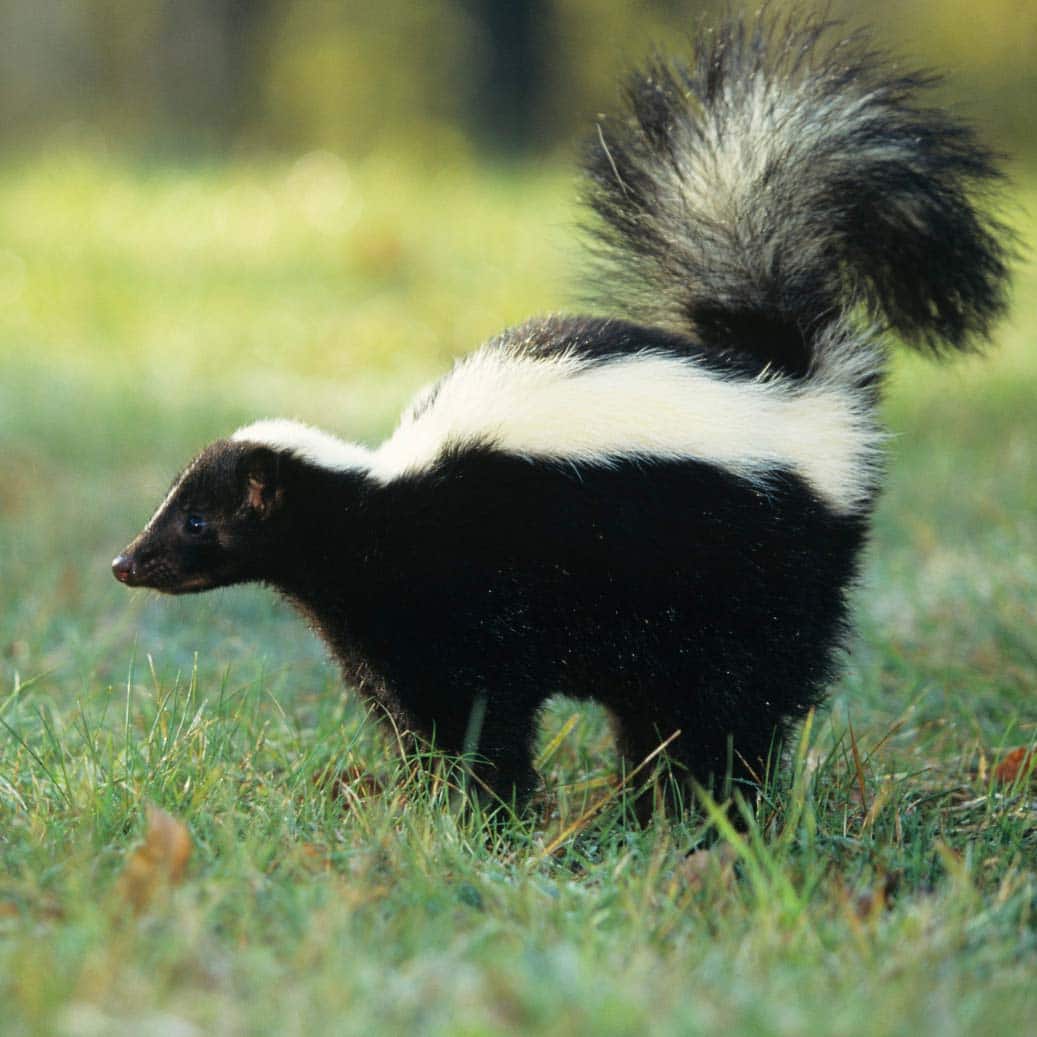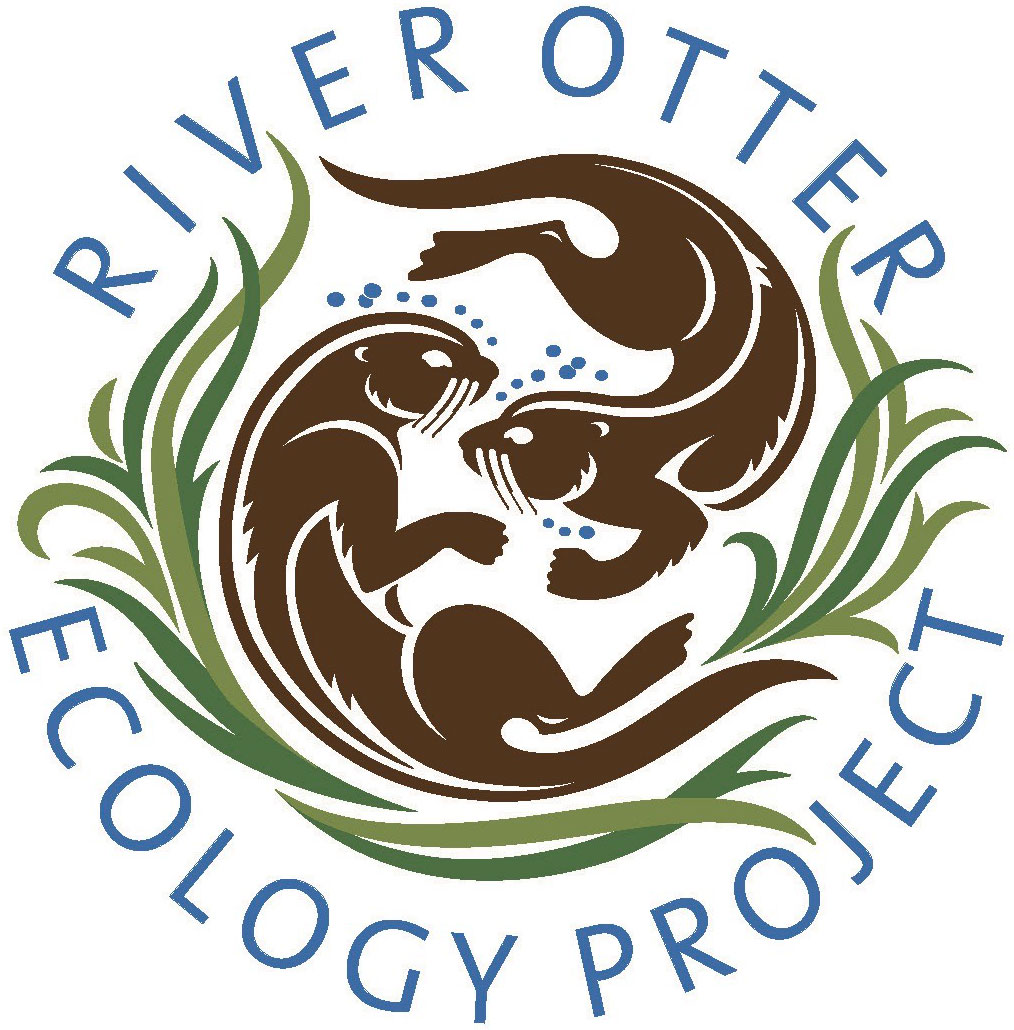Skunk

The striped skunk is about the size of an adult house cat. Its fur is mostly black with white on its neck and head. As with most striped skunks, the white extends down the back and through the tail, however, it does not necessarily have to have the white stripe. It can be totally black, too.
The spotted skunk is about half the size of a mature house cat and as the name implies, it has spots. The fur coat is for the most part black with random white spots.
Both species give birth to their young between April-June. Newborns skunks have very little hair, but show faint black and white markings. By June or July, most young skunks are weaned and will go out on foraging trips with their mothers.
Even as adults, skunks have a poor sense of sight, hearing and smell. When threatened a skunk will face their attacker, arch its back, raise its tail and stomp its feet. If this warning is ignored, the skunk will turn around with its tail raised and spray a strong, foul smelling musk.
Skunks are omnivorous in general, eating anything from acorns to small rodents. Searching for food in soil, they are known to uproot gardens and lawns. Skunks are nocturnal, and leave their burrowed homes (which may be in the ground, under buildings or beneath wood piles) just after sunset to search for food. They usually return by sunrise.
The River Otter Ecology Project is a registered 501 (c)(3) EIN #45-4997526 non-profit organization dedicated to the welfare of river otters and our watershed. Our organization is not affiliated with any other otter-related research group or community outreach organization.
© 2022 River Otter Ecology Project
